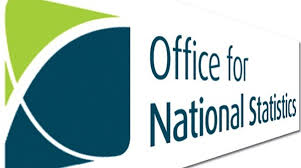Current-account deficit narrows to 18.4 billion pounds as U.K. consumers remained under pressure as 2017 came to an end, data published Thursday show.

Adjusted for inflation, disposable incomes rose just 0.1 percent in the fourth quarter and households saved no more of their incomes than they did in the previous three months, the Office for National Statistics said.
Consumer spending climbed 0.3 percent, matching the weakest reading in three years. Economic growth overall grew an unrevised 0.4 percent. Separate figures show the current-account deficit narrowing to 3.6 percent of gross domestic product, the least since 2012.
The GDP figures help to explain the troubles engulfing the British retail sector, where stores from home-improvement chain to B&Q to suit seller Moss Bros have warned of difficult trading conditions after a year of prices rising faster than wages.
While the squeeze may be past the worst, no one expects a rapid consumer revival with household spending — and the economy as a whole — forecast to see the weakest growth in years in 2018.
Real disposable income per head fell 0.1 percent in the fourth quarter. The saving ratio stayed at 5.2 percent in the fourth quarter. In 2017 as a whole, it fell to 4.9 percent, the lowest on record, and household borrowing increased throughout the year.
The economy, already among the worst performers in the Group of Seven, was also held back by relatively sluggish business investment as Brexit uncertainty led firms to put projects on hold. A widening trade deficit exerted a drag on GDP.
Growth in the dominant services industry was revised down 0.4 percent in the fourth quarter, a move that was partly offset by an upward revision to construction. In January, services output rose just 0.2 percent, and the three-monthly pace picked up to 0.6 percent.
While GDP overall was unrevised, the ONS described the figure as a “weaker 0.4 percent than it was.” Output rose 1.4 percent from a year earlier, and the annualized growth rate was 1.6 percent compared with 2.9 percent in the U.S.
The current-account deficit, the gap between money leaving the U.K. and money coming in, narrowed to 18.4 billion pounds in the fourth quarter from a downwardly revised 19.2 billion pounds in the previous three months. That left the shortfall in 2017 as a whole at 4.1 percent of GDP, the least since 2011, as a growing world economy boosted the earnings on foreign investments.
The figures may help allay concerns about the willingness of foreign investors to fund the deficit by buying British assets as the U.K. prepares to leave the European Union.
In the fourth quarter, a wider trade deficit was offset by improvements in the balances on investment income and government transfers.
Kindly follow us on twitter:@AfricanVoice2










